Name Sirius Commissioned 16 September 2006 Launched 12 April 2004 Displacement 46.76 million kg Beam 32 m | Acquired 3 June 2004 Motto To Serve and Provide Length 191 m Draft 11 m Builder Hyundai Heavy Industries | |
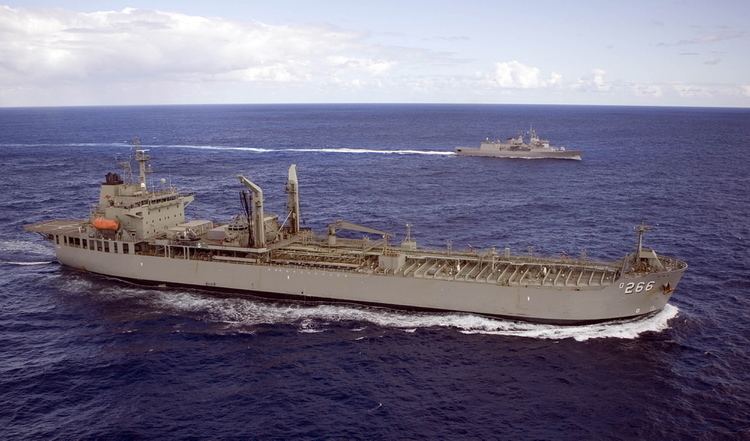 | ||
Renamed MT Delos (during construction) | ||
HMAS Sirius (O 266) (formerly MT Delos) is a commercial tanker purchased by the Royal Australian Navy and converted into a fleet replenishment vessel to replace HMAS Westralia. Launched in South Korea on 2004, and converted in Western Australia, Sirius was commissioned in 2006; three years before a purpose-built vessel would have, and at half the cost. The tanker is expected to remain in service until the 2020s.
Contents
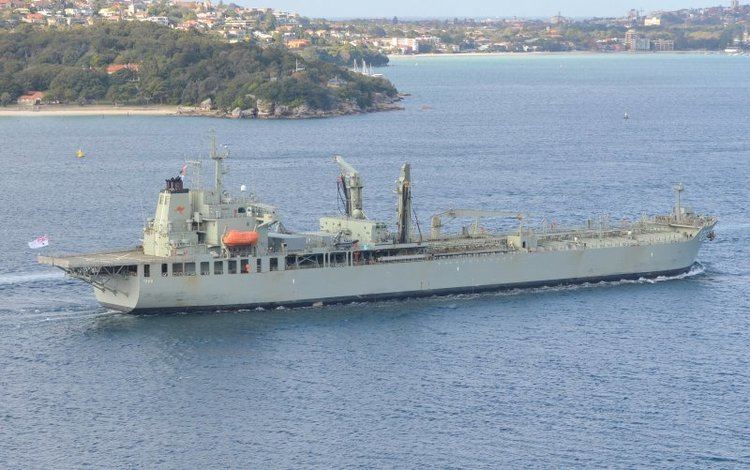
Construction and acquisition
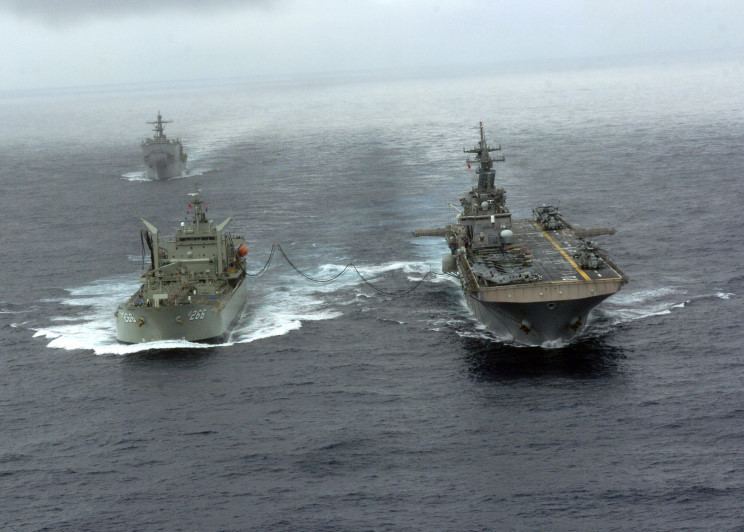
Delos was built at Hyundai Mipo Dockyard in South Korea. Another five ships were built to the same design, all for civilian service. She was launched on 12 April 2004, and was purchased by the Australian Government on 3 June 2004, with the intention of modifying her as a replacement for HMAS Westralia. Delos was leased for operation as an oil tanker until September 2005, then was taken up by Tenix Defence (which had been awarded the A$60 million conversion contract on 15 March 2005) for conversion into a replenishment vessel, which was completed 5 weeks ahead of schedule. Sirius was commissioned into the RAN on 16 September 2006, in a ceremony that included Westralia's decommissioning. While HMAS Sirius is the first ship of this name to serve as part of the RAN, she is named after HMS Sirius, the flagship of the First Fleet of British convicts sent to Australia in 1788.
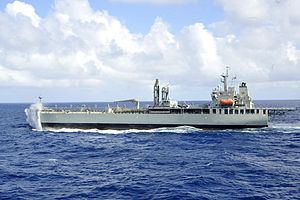
Sirius has a full load displacement of 46,775 tonnes, is 191.3 metres (628 ft) in length, with a beam of 32 metres (105 ft) and a draught of 11 metres (36 ft). Propulsion machinery consists of a single propeller shaft driven by a single Hyundai B&W 6S 50MC diesel, supplemented by a bow thruster. Top speed is 16.5 knots (30.6 km/h; 19.0 mph), and the ship has a range of 16,000 nautical miles (30,000 km; 18,000 mi) at 14 knots (26 km/h; 16 mph). Sirius can carry up to 34,806 cubic metres (1,229,200 cu ft) of fuel, including 5,486 cubic metres (193,700 cu ft) of helicopter aviation fuel, plus 240 tonnes of dry stores carried in a container deck designed for twelve 20-foot (6.1 m) intermodal containers. Modifications by Tenix included the fitting of two replenishment points (one on each side, allowing the underway replenishment of two ships simultaneously), installation of a helicopter deck aft of the superstructure, fitting of the container deck, addition of two 70-man lifeboats and two RHIBs (the latter sourced from Westralia), and modification of the internal layout and equipment to bring it to naval standards. Sirius is armed with five 12.7 mm machine guns for self-defence. The ship's company includes 8 officers and 46 sailors.
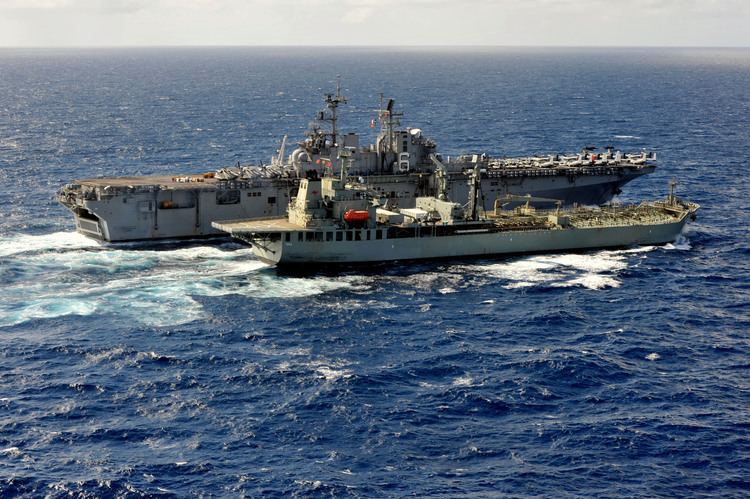
Originally, the RAN planned to have a ship specially constructed for the role. The decision to instead purchase an under-construction civilian tanker and modify her for military service allowed Sirius to enter service three years before originally planned, at half the acquisition project's planned cost.
Operational history
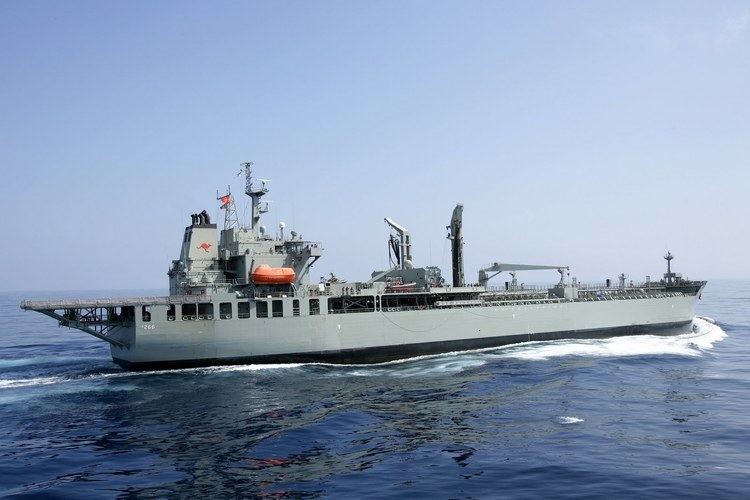
On the morning of 13 March 2009, Sirius was one of seventeen warships involved in a ceremonial fleet entry and fleet review in Sydney Harbour, the largest collection of RAN ships since the Australian Bicentenary in 1988. Sirius did not participate in the fleet entry, but was anchored in the harbour for the review.

In 2010, Sirius was approved to carry and deploy boarding parties. This capability was tested during Exercise Kakadu 10, along with the ship's first ever dual replenishment.
Sirius was forced to turn back en route to the RIMPAC 2010 exercise in Hawaii due to problems with her engine, and did not participate in the exercise as a result.
The tanker completed a six-month maintenance period in Sydney on 16 September 2014; she spent five months of this period out of the water in the Captain Cook Graving Dock.
End of service
Sirius was originally expected to remain in service for approximately 15 years. In 2012, the ship was predicted to remain in service until the early 2020s. The 2013 Defence White Paper stated that the replacement of Sirius and HMAS Success would be brought forward. As well as building replacement vessels (either in Australia, overseas, or a combination), leasing existing vessels was also to be considered.
In June 2014, the Minister for Defence announced that two companies had been invited to a restricted tender competition. Spanish shipbuilder Navantia is offering the Cantabria design, while South Korea's DSME is proposing the downsized Aegir variant of the Tide-class tanker. The 20,000+ tonne ships will be built overseas, as they will be too large to build in Australian shipyards. As of 2015, a timeline for selecting the successful tenderer and building the ships has not been announced.
